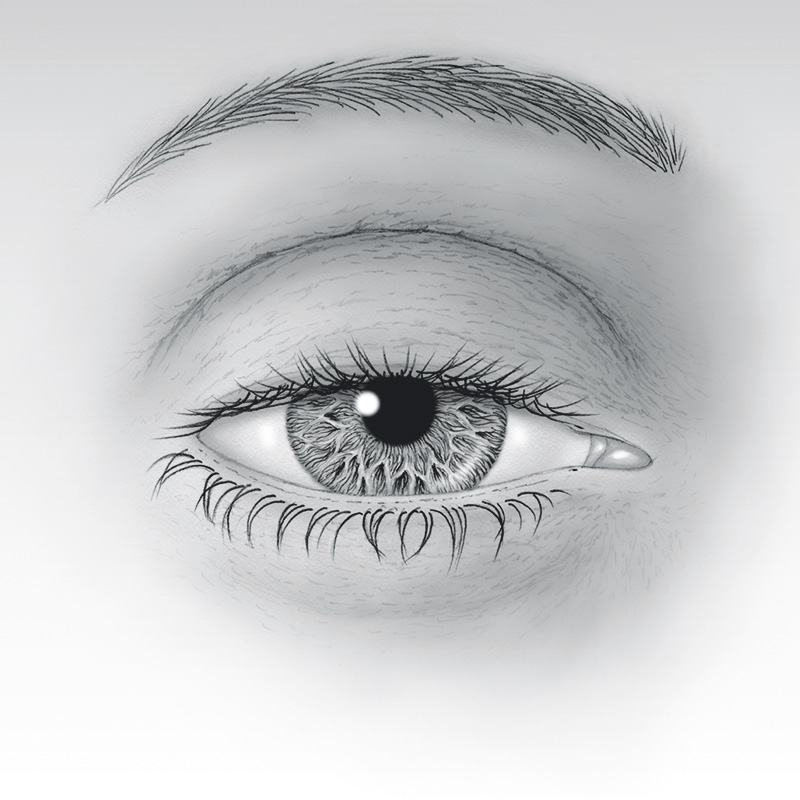Droopy Eyelids (Ptosis)
In children, the most common cause is improper development of the levator muscle, the major muscle responsible for elevating the upper eyelid. With adults, it may occur as a result of aging, trauma, or muscular or neurologic disease. As you get older, the tendon that attaches the levator muscle to the eyelid can stretch and allow the eyelid margin to fall and cover part of the eye. It is not uncommon for a patient to develop upper eyelid ptosis after cataract surgery. Ptosis can also be caused by injury to the oculomotor nerve (the nerve that stimulates the levator muscle), or the tendon connecting the levator muscle to the eyelid. Symptoms of ptosis include difficulty keeping your eyes open, eyestrain, forehead aching from the increased effort needed to raise your eyelids, and fatigue, especially when reading. In severe cases, it may be necessary to tilt your head back or lift the eyelid with a finger in order to see out from under the drooping eyelid(s). Children with ptosis may also develop decreased vision in one eye (amblyopia or “lazy eye”), strabismus (eyes that are not properly aligned or straight), refractive errors, astigmatism, or blurred vision. The condition may be the first sign of myasthenia gravis, a disorder in which the muscles become weak and tire easily. Ptosis is also present in people with Horner’s syndrome, a neurologic condition that affects one side of the face and indicates injury to part of the sympathetic nervous system. Treatments Ptosis surgery usually involves tightening the levator muscle in order to elevate the eyelid to the desired position. Your surgeon will discuss with you whether the incision and stitches will be on the outside or inside of your eyelid. If the levator muscle is extremely weak, then a “sling” operation may be performed, enabling the forehead muscles to elevate the eyelid(s). Congenital ptosis is also treated surgically. The specific operation is based on the severity of the ptosis and the strength of the levator muscle. It is important to realize that completely normal eyelid position and function may not be possible to achieve. Children with ptosis should be followed closely, before and after surgery, with eye exams on a regular basis to ensure that their vision is developing properly. Ptosis surgery is an outpatient procedure. Young children are put under general anesthesia while older children and adults will often receive “twilight” anesthesia. Some surgeons will perform ptosis surgery in an office setting. Your doctor can discuss the options available in your situation. Risks and Complications Your surgeon cannot control all the variables that determine the final position of your eyelid. There is ALWAYS a possibility that the lid will be higher or lower than desired or the curve and shape of the lid can be different. Touch up surgery to improve lid position may be necessary. While perfect symmetry between the two eyelids can never be guaranteed, the vast majority of patients see an improvement in their lid position and are happy with their results. As with any medical procedure, there may be other inherent risks that should be discussed with your surgeon. Droopy Eyelids (Ptosis) Photos • Find an ASOPRS Surgeon Near You |
 Eyelid Ptosis (Droopy or Low-Riding Eyelid)
Eyelid Ptosis (Droopy or Low-Riding Eyelid)